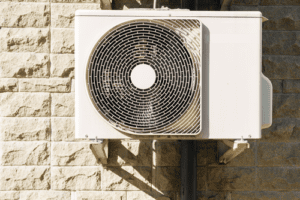Keeping your building functional and comfortable is no easy feat. A lot goes into those efforts, and there are many areas of concern that may demand your attention — and that’s before you factor in any of the other responsibilities you may have. There is one constant across all types of maintenance, though: “everything wears out eventually.” — which is true from something as basic as a lightbulb to as complex as your building’s HVAC infrastructure. An HVAC replacement is not quite so easy as swapping out a bulb, though, and requires considerably more preparation. How can you tell when the time for a change has come, and what action should you take?
How to Know It’s Time for an HVAC Replacement
 Sometimes it’s easy to know when you need a new system — sometimes it’s not. Knowing how to make the right decision when the time comes is important. Watch out for some of these signs that say you need an HVAC replacement without delay:
Sometimes it’s easy to know when you need a new system — sometimes it’s not. Knowing how to make the right decision when the time comes is important. Watch out for some of these signs that say you need an HVAC replacement without delay:
- Rising energy bills that you can’t seem to get under control. When you can rule out seasonal changes and overuse, and after implementing new strategies, it’s more than likely your equipment no longer functions at the same level of efficiency it once did. As a result, you pay more when the system remains overworked.
- Poor system performance that persists even after maintenance. Is it always too hot or too cold in the building based on the season? You might be able to feel air blowing from the vents, and it may even be cool, but it’s never quite enough to outpace the heat and make the building comfortable. It’s another telltale sign that your existing installation is no longer up to the task.
- Expensive malfunctions continue to pile up month after month. Do you find yourself reaching out to an HVAC technician repeatedly? Freezing pipes, no airflow, broken components — it can all pile up, and so too will the service invoices. Much like with a car, there comes a point when repairs yield diminishing returns, and replacement is more cost-effective.
- Your system has reached the end of its life due to old age. The general metric for an HVAC system’s lifespan is between 10 to 15 years. When was yours installed? If it was outside that window, your problems likely stem from age and inefficiency.
As a rule of thumb, if you find you are spending more time thinking about and maintaining your HVAC systems than not, it may be time to step into the future.
What Are the Next Steps to Take?
Wouldn’t it be wonderful if a commercial HVAC system was something you could simply pick up at a hardware store and take back to the building? While it doesn’t work that way, your next steps don’t need to be difficult ones. Here’s what you should do:
- Determine whether an in-kind replacement or an upgrade is in order. Are you satisfied with the performance of the type of system you have now, or should you look for something with more modern bells and whistles? Answering this question is a multi-step process, but one that can save you in the long run.
- Work to understand the correct size of the system you will need. Have your building load capacity needs changed since the building’s last installation? Would a smaller or larger system better serve your needs? Doing a rudimentary load calculation can help you to better understand your heating and cooling needs before approaching the pros.
- Engage a professional to discuss your requirements. Now is the time to start exploring actual products. An HVAC contractor can also examine your existing system, visit your building, and develop a more thorough load calculation based on your initial reckoning. Together you can coordinate the selection of any energy efficient and properly sized unit that will serve well for years to come.
- Make plans for installation and the future care of the system. Discuss placement options, such as ground-level or rooftop HVAC units, and the date of installation. Don’t forget to explore a regular maintenance plan, either; once you choose a new system, it’s vital that you provide it with the routine care necessary for true longevity.
By breaking the process down into these manageable steps, you’ll find the replacement process far easier to navigate.
Tapping into the Experience of Pros
While an HVAC replacement can seem like unnecessary additional stress, it can, in fact, be an excellent opportunity for your building. Replacing older hardware with a newer, more energy efficient installation can help to drive down energy costs for your business or the building’s tenants. You may even find that the overall comfort level of the structure’s occupants increases, too. When you’ve identified the signs that say a replacement is due and when you’ve developed a sense of what you need, reach out for help. Contact a trusted commercial HVAC company in your area and share what you’ve learned.

